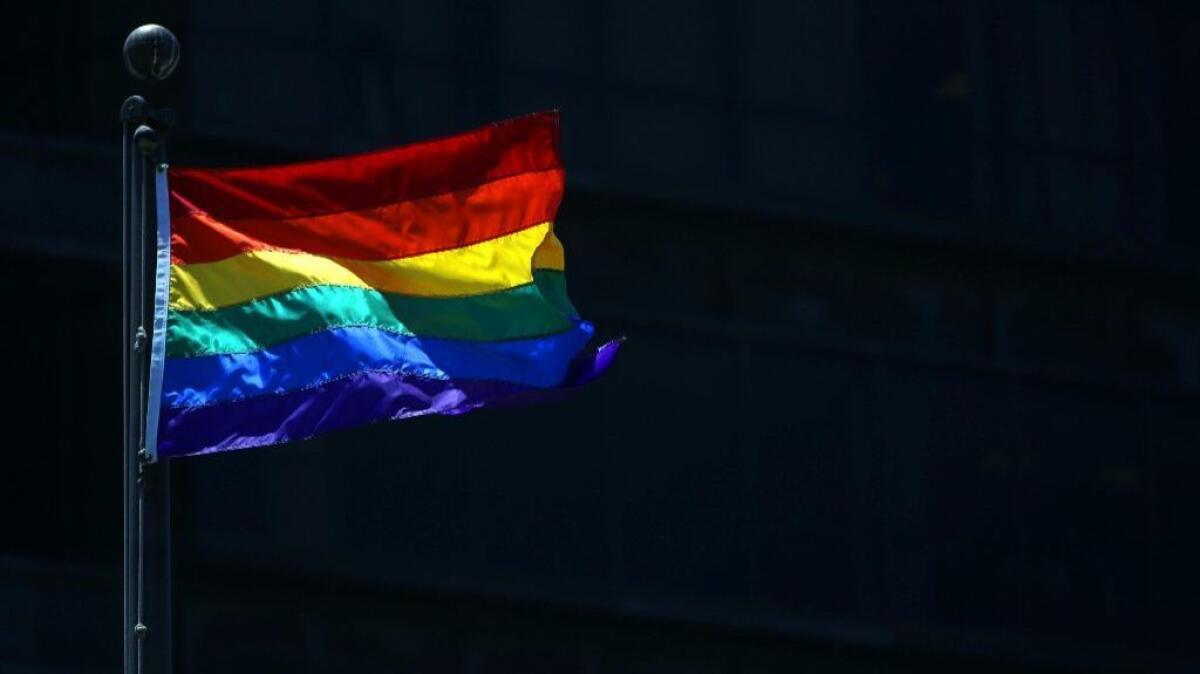L.A. Times updates LGBTQ style guidelines, adopts singular ‘they’

The Times has updated its guidelines for covering the LGBTQ community.
As our understanding of gender and sexual orientation evolves, so does language. The Times’ goal is to be contemporary, clear and flexible, while maintaining consistency of style.
General guidelines for writing about sexual orientation and gender identity are similar to those for writing about race and ethnicity: Avoid stereotypes, and mention sexual orientation or gender identity only when they are relevant to the story.
The updated guidelines advise using LGBTQ as an umbrella term for the lesbian, gay, bisexual, transgender and queer community. The Q most commonly means “queer,” but can also mean “questioning,” or both. LGBTQ is preferred over LGBT or “gay community” because it is more inclusive.
“Queer” previously was considered a term to avoid because of its history as a pejorative. However, “queer” has come into accepted usage among people who are not exclusively heterosexual but who don’t identify as gay, lesbian, bisexual or transgender. The term also is used to describe genres, such as “queer cinema” or “queer studies.”
When referring to people in stories, The Times aims to be accommodating and respectful of the identities and pronouns the people themselves use.
The guidelines permit use of ‘they’ and ‘their’ as singular pronouns for individuals who do not identify as male or female, or for when gender is unknown.
The updated guidelines permit use of “they” and “their” as singular pronouns for individuals who do not identify as male or female, or for when gender is unknown.
The use of the singular “they” was adopted last month by the Associated Press Stylebook.
Ben Zimmer, a language columnist at the Wall Street Journal and chairman of the American Dialect Society’s New Words committee, said in a post on the society’s website that the “singular ‘they’ has become a particularly significant element” of discussions of gender identity.
“While many novel gender-neutral pronouns have been proposed, ‘they’ has the advantage of already being part of the language,” Zimmer said.
Under the new Times style guidelines, writers should identify transgender people with the names and pronouns they use, and that are consistent with the way they live publicly. Writers should not say a transgender man was “born a woman”; if this information is relevant, say he was “designated female at birth” or “identified as female at birth.” “Assigned female at birth” is also acceptable.
As language has evolved, some terms have fallen out of acceptable usage. These include: “hermaphrodite,” “homosexual,” “openly gay,” “transvestite” and “transsexual.” The guidelines advise Times reports to avoid using them.
readers.representative@latimes.com
For staff and newsroom news, follow @LATreadersrep



